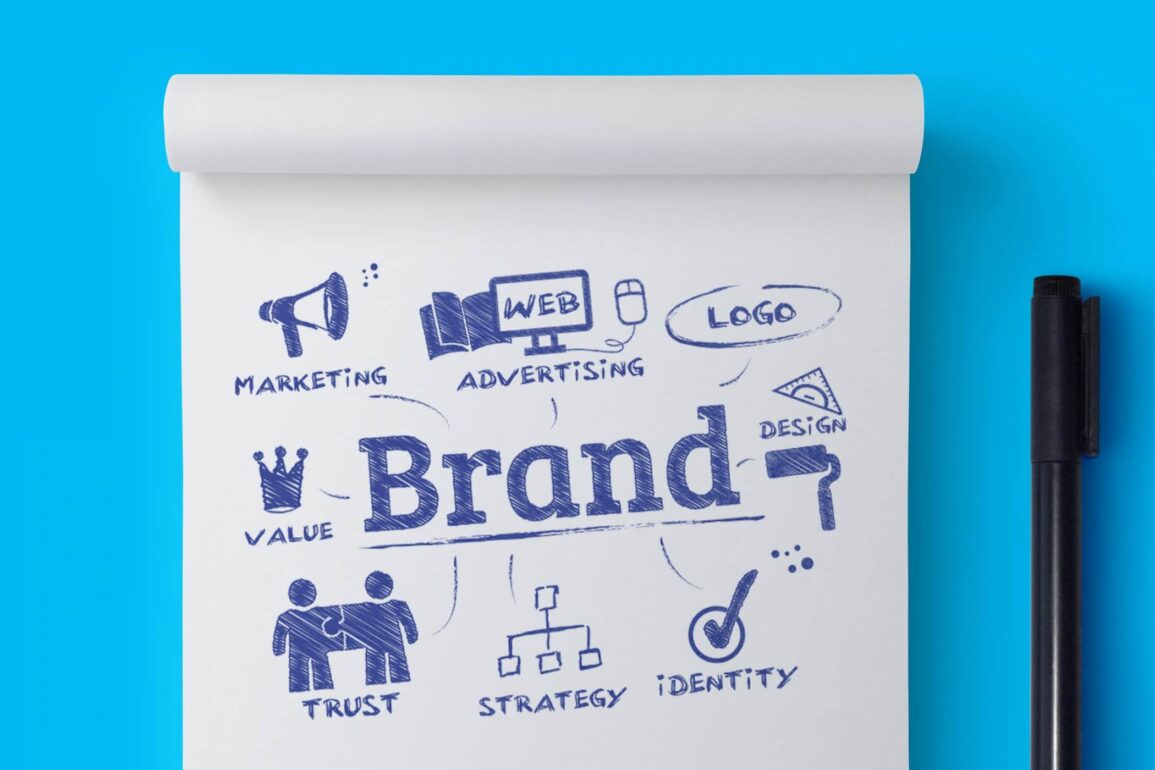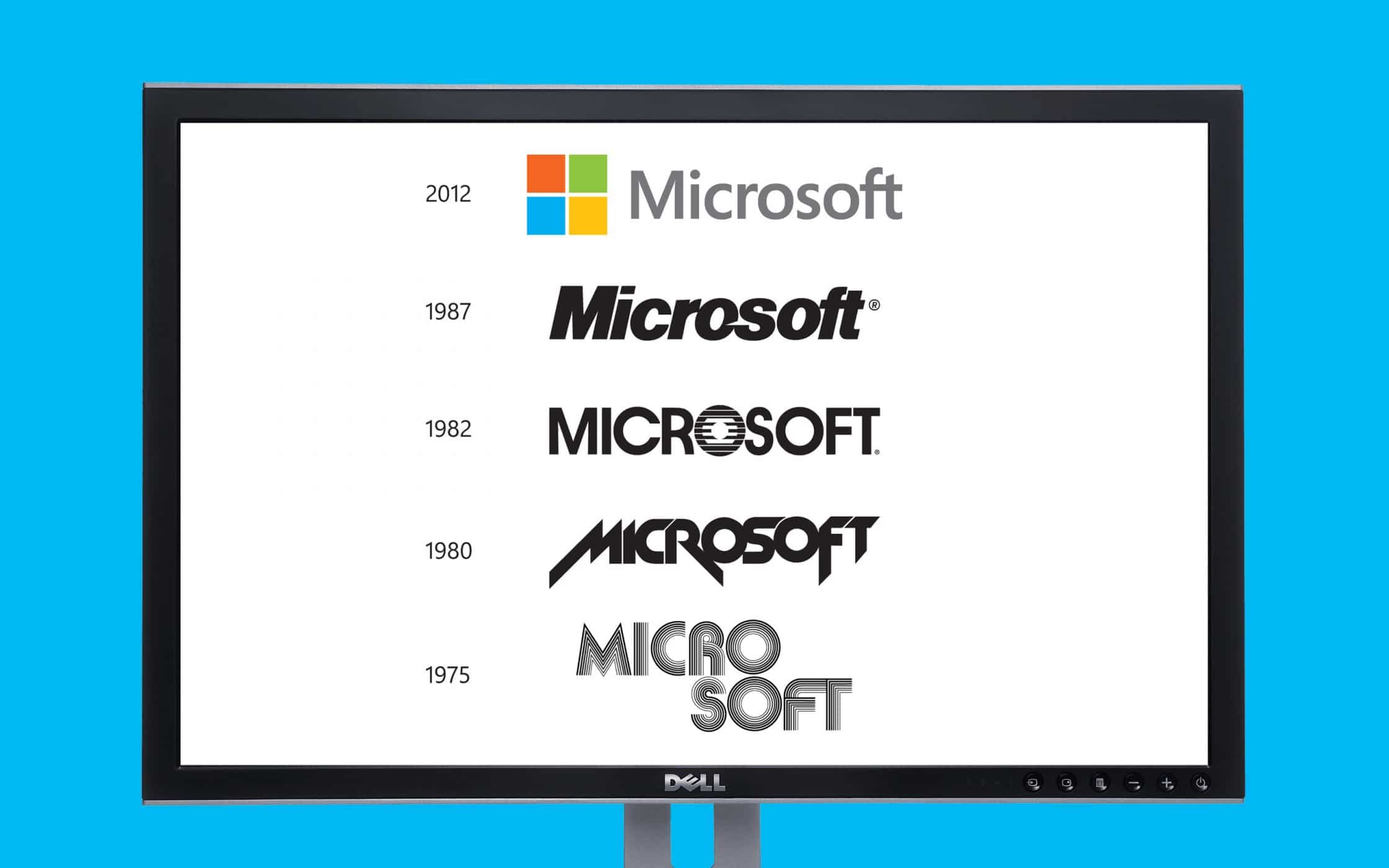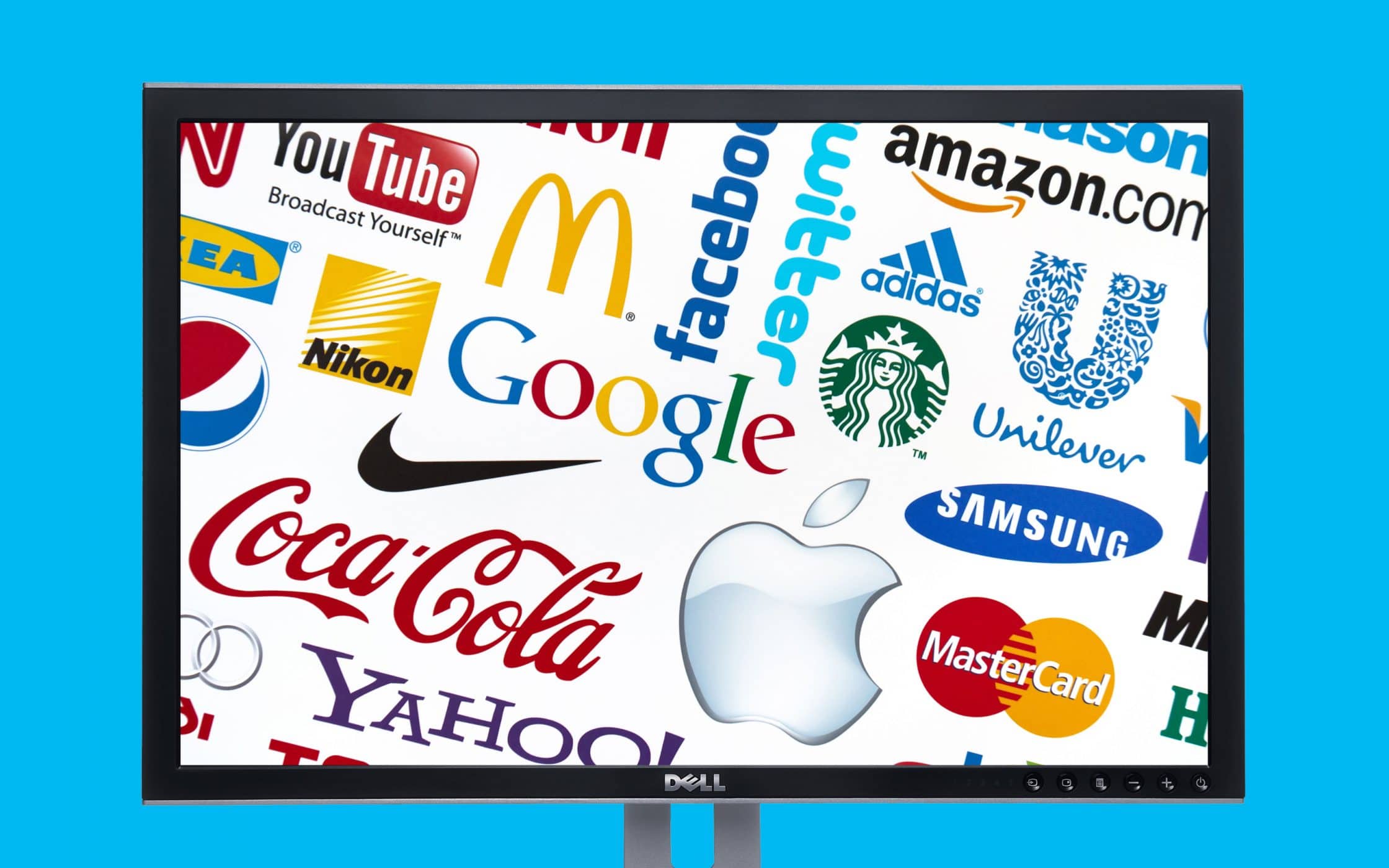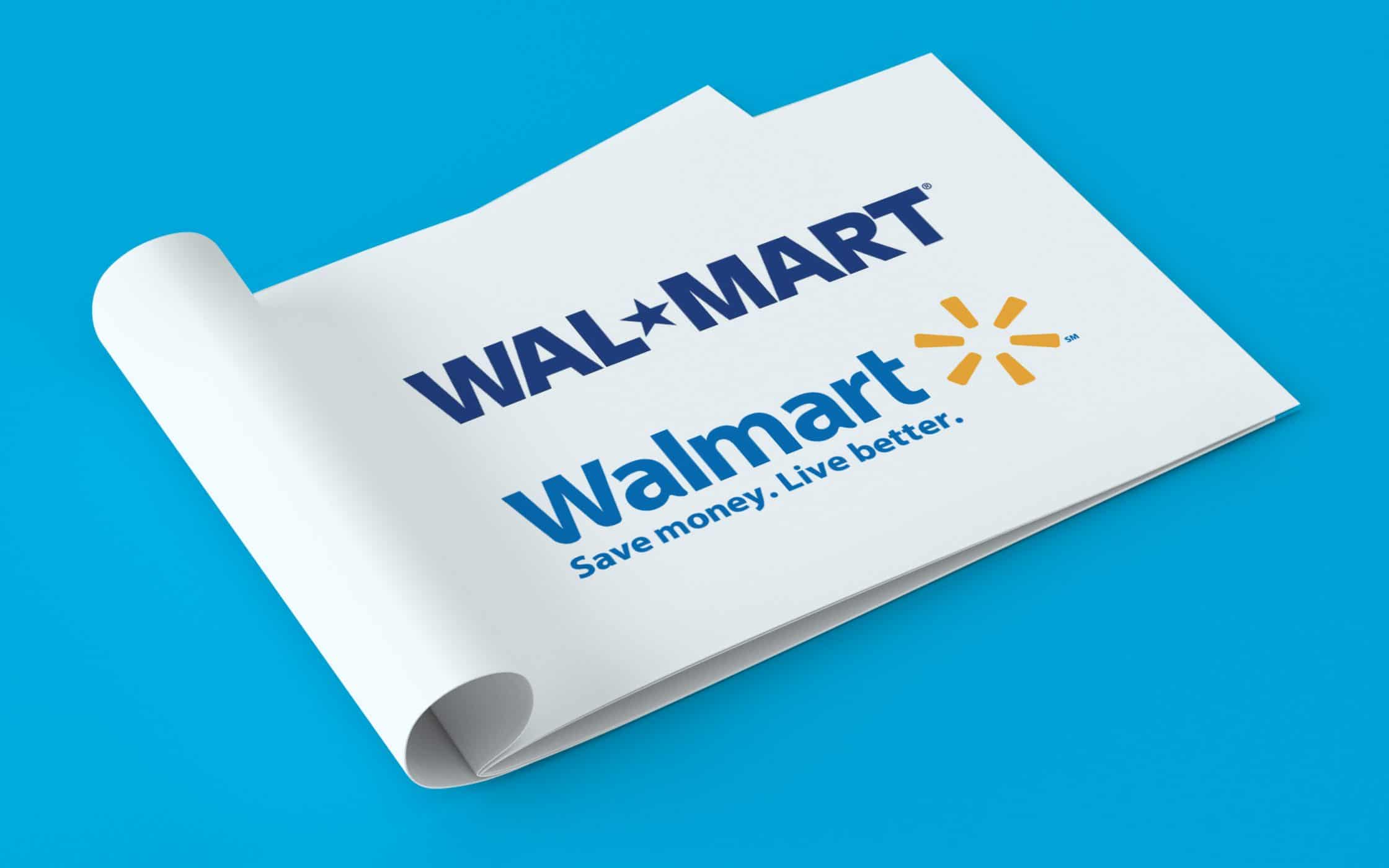Rebranding Vs brand refresh: What’s the difference and what’s right for you?

Rebranding, brand refresh – it all sounds the same, doesn’t it?
To people on the outside of the design world looking in, it’s easy to get confused when these two terms come hand in hand. You see companies evolving, changing, and adapting to the current market, but are they rebranding, or just refreshing?
Though the two terms seem similar on the surface, when you get down to the details, the differences are like night and day. While a brand refresh is like giving your company a fresh lick of paint, a new look, and a fancy new logo, “rebranding”, is all about tearing down everything you’ve built, and starting again from scratch. In other words, one is far more dramatic than the other. Rebranding Vs brand refresh? In this thought-piece, we’ll outline the key differences.
To simplify the idea a little further, a brand refresh might include:
- Tweaking your current design or logo.
- Updating your slogan.
- Changing your colour pallet.
- Refreshing marketing materials.
- Using a new font.
A rebrand, on the other hand means:
- Creating a new personality.
- Designing a new background for your company.
- Establishing yourself within a different market.
- Overhauling your entire image.
Here, we’re going to help you draw a line, once and for all, between the distinctions of “refresh”, and “rebrand”, as well as giving you a few tips to help you decide which option is best for you.
What is a brand refresh?
In the world of branding, a refresh is like a tactical manoeuvre. How complicated your brand refresh process is will depend on the extent to which you need to change your image. Often, the idea is to have a distinct impact on the way that your company feels, sounds, and looks to your customer. That means changing:
- Your brand voice.
- Your visual branding.
- Your customer service/ product offerings.
As businesses grow and change, it’s important for their brands to reflect the current marketplace. Simply put, if you stayed the same while all the companies in your industry changed, adopted fresher logos, and newer ways of communicating with their audience, then you’d end up losing your competitive edge.
A great example of this is the Microsoft Logo, which you can see here:

Over the years, the logo has evolved to reflect the aesthetics that appeal best to their customers. As simple graphics, colour, and clarity have become more appealing to people within the modern marketplace, Microsoft have made the necessary changes to keep pace with companies like Apple, and Linux.
Ultimately, a brand refresh not only tells your audience that you’re modern and relevant, it also shows that you’re connected to your industry. Nobody wants to do business with a company that seems as though it’s way behind the curve.
Your brand refresh will be your attempt to reflect a more current, updated image of your company, reassuring your customers that you still know what you’re doing. Typically, the brand refresh process will look at your use of colour, typography, styles, and even your tone of voice. Though it’s not as comprehensive as a rebrand, the results can be astonishing.
Think of it as your personal makeover, a way to transform how your brand is perceived. It’s amazing how much a fresh image and a little bit of new photography can change a brand – plus, it’s a lot faster and cheaper than a full-scale rebrand.
When is it time for a brand refresh strategy?
Most of the time, companies prefer to opt for a simple brand refresh, rather than a complete rebrand. A good brand refresh strategy requires less risk than a total overhaul, and it can still get you the results you need. For instance, by making subtle changes to your positioning and branding, you can:
- Preserve the integrity of your brand.
- Infuse the business with new vitality.
- Ensure your company image keeps up with the changing marketplace.
- Expand your reach to new customers.
So, when is the right time for the brand refresh process?
The simple answer, is that if you’re facing one of the scenarios below, you might need a brand refresh:
- You’re outdated: Though your logo was innovative when you first started your business, the changing times might have left you stuck in the past. Carefully evaluate your branding and determine whether your image is propelling you forward, or holding you back.
- You’ve changed: Does your brand messaging accurately reflect what you offer and who you are? Companies often evolve over time to remain relevant. Make sure your customers understand what you’re about now.
- You’re inconsistent: If you’ve been playing with different colour schemes and logos for a while now, the chances are you’re confusing your audience. A refresh can help you to find your focus.
- Your audience has changed: You may not be reaching your target audience anymore, because your market has shifted since you first began your branding efforts. A refresh will help you to focus on targeting the people you need.
- You’re growing: If you’re expecting to see growth in your business towards the future, either because of a merger, new product line, or marketing efforts, it’s a good idea to reassess your brand.

The brand refresh process: Your brand refresh strategy
So, what does a brand refresh strategy actually involve?
Usually, the process is pretty simple. Unlike in a total rebrand, where length consultation and guidance is required, a brand refresh only needs some limited research, competitor analysis, and a good creative brief.
The important thing to remember about a brand refresh, is that everything is done on the surface. It’s like coming home to a flat that has a new lick of paint, and new furniture – the feel is different, but the underlying structure remains the same.
Although a refresh can definitely promote the development of new and improved visual identity guidelines, as well as an extensive brand implementation program, it’s worth remembering that your brand is more than just a logo and colour pallet. Be sure you think about the stability of your structure, before you begin.
Once you’re sure that the brand refresh process is right for you, these are the steps you’ll follow:
1. Research and discovery
Any branding development requires research, but this is something that’s often overlooked and undervalued by many companies. It’s crucial to figure out what you want to achieve with your brand refresh, and the things that you need to do to reach your goals. You need to conduct plenty of research to determine how the market views your company, what differentiators you possess, and what you might need to change to stay relevant.
2. Competitive analysis
Though it’s a bad idea to simply copy what your competitors are doing when it comes to a brand refresh, examining the marketplace will give you an idea of which styles and trends are most effective in your industry. The idea should be to look at a host of factors, including:
- Tone of voice.
- Value propositions.
- Key slogans and taglines.
- Logos, colours, fonts, and styles.
Once you’ve done this, you should have an idea on how to keep up with your competitors, and potentially make sure you stand out, too.
3. Visual identity update
One of the primary reasons that any brand engages in a brand refresh, is that they have an outdated visual identity. It’s crucial to make sure that your image is consistent not only with the marketplace that you’re in, but your manifesto and brand position too. The idea is to stay within the current styles of the marketplace, without blending into the crowd. At this stage, you’ll look at your logo, colour pallet, photography, fonts, styles, and more to determine how they show the fundamentals of your brand.
4. Tone of voice/messaging update
Though a brand refresh can be largely visual, it’s important to remember that messaging is important too. Today’s marketplace is becoming increasingly concerned with not only the appearance of the brands that they do business with, but also the personality and story that exists behind that brand. If you’re changing your image, then it makes sense that you might need to adapt your messaging and voice too.
Brand refresh examples: A little inspiration
Sometimes, a brand refresh can be dramatic, however, it’s mostly cosmetic. In general, your aim should be to ensure that you keep the heritage and history of your brand the same. If you’re changing the fundamentals of what makes you, you, then you’re no longer conducting a brand refresh – you’re doing a complete rebrand.
Let’s look at some examples:
Walmart:

Walmart updated their brand image from something that used dark colours, bold, capitalized typography, and sharp-edged shapes to something much more friendly and welcoming. The lighter colour in the blue changes the concept from “business-like”, to “family-friendly”, as does the change from capital letters to lower-case.
Starbucks:

Starbucks has evolved a lot over the years. The use of green helps to draw attention to their Fairtrade position in the market, and their environmentally-friendly approach. The focus on the imagery in the logo reflects a modern shift to iconography over text.
UPS:

UPS have updated their logo to make it more modern, with new colours, and shapes. Though the primary badge shape has remained the same, the use of colour and shading helps it to appear more 3D and engaging.
What is rebranding? Your rebranding definition
By this point, you should have a pretty good idea of what a brand refresh is. Now it’s time to focus on our rebranding definition.
In simple terms, if a brand refresh is a makeover for your company, then a rebrand is the plastic surgery. It’s a change in the colour and style of your hair, as well as the underlying features of your face. While a refresh updates your identity, a rebrand completely transforms it.
Typically, the goal of rebranding is to influence and change a customer’s perception about a service or product that the company offers overall, by revitalising the brand and ensuring that it appeals to the existing needs of a customer, or a new set of customers.
There are plenty of reasons why a brand might want to change their image. For instance, you might want to reposition your company and vision to show your customers a change in focus. Alternatively, you might be looking for a way to appeal to a new market, expand your business scope, or set yourself apart from your competitors.
Most of the time, businesses consider a rebranding strategy when:
- The competition is growing, so a brand needs to evolve too.
- The audience is changing.
- There’s a desire to market new services and products.
- Old marketing methods aren’t working anymore.
- The current identity is out-of-date.
- Industry expectations have changed.
As a rebranding agency in London, Fabrik recognises the extra work that goes into a rebrand. Because the process is similar to creating a brand from scratch, a rebrand often means getting to the bottom of your organisation and finding out what makes it work. We need to talk to all the major players in a business, find out information about pain-points, threats, weaknesses, and strengths.
In a rebranding process, we discuss things like brand manifestos, storytelling, differentiation, and positioning through hours of meetings. The output is a creative brief, brand manifesto, and full branding strategy document, which can lead to the development of a new verbal and visual identity.
In some cases, a rebrand will even include a change of name for the brand, as with Fabrik’s recent development for Lumeon.

What makes a successful rebranding strategy?
Rebranding can be dangerous when done wrong, or an incredible solution for an otherwise stagnant business when done right.
At a fundamental level, rebranding is the inward process of recreating the way that your organisation expresses its identity to the world. In other words, it’s about changing your customer’s perception of you.
Whether your rebranding strategy comes about because your current brand feels outdated or stale, or you feel that you’re unable to reflect the evolution of your organisation with your existing brand, a rebranding strategy requires a great deal of commitment and creativity.
Back in 2000, BP shelled out £4.6 million on the development of a new logo, and another £132 million on two years of rebranding for all of their external images. While the average rebrand probably won’t cost you anywhere near that much, it’s worth committing to the process as though that amount of cash was at stake.
After all, the risk of getting lost in the middle of a rebrand could mean that your company becomes stranded between an incomplete future, and an inconsistent present. That means that you struggle to distinguish yourself in the competitive market, inspire your employees, and resonate with your customers.
So, you’ve had your answer to “What is rebranding?”, now it’s time to look at what the rebranding strategy entails:
Step 1: Finding your reason
Rebranding can be a slippery slope, so it’s important to make sure that you know the business reason behind your rebrand before you get started. For instance, some companies might have a desire to improve their growth, whereas others will be looking for a chance to appeal to a new audience. Finding your reason will help to give your rebrand focus and direction.
Step 2: Researching
Researching is crucial for a refresh, or a rebrand. When you’re clear on why your company is rebranding, you’ll need to take a look at what’s happening in your marketplace, as well as your current clients. If your aim is to evolve into a new market space, then the research that you conduct should include an insight into the new segment too. The aim will be to end up with something that helps you to understand your brand position, competencies, and opportunities.
Step 3: Hone in on differentiation
Identifying and communicating your specific points of differentiation is crucial to mobilising a consumer to select you over your competitors. During a rebrand, it’s important to make sure that your differentiation points don’t become lost. Instead, your focus should be to draw even more attention to what makes you unique.
Step 4: Use messaging and positioning to inform brand strategy
Your research into your market position, and your focus on differentiation should have helped you to figure out how you’re going to communicate with your audience. As you develop your architecture for market positioning and messaging, you should begin to uncover the foundations of your brand strategy. Remember, branding is the perception that your customers have of your company. Creating that perception is something that needs to work on every level of your business, from logo design, to the way that you post updates on social media.
Step 5: Create your new identity
Only after you have a thorough plan, and plenty of research, can you start making structural changes to your brand. When establishing your new identity, you’ll need to think about things like the name of your company, your logo, tagline, colours, marketing materials, and more.
Step 6: Build your brand
Finally, you’ll be ready to share your new brand with the world. This means creating a plan that promotes and strengthens your new identity in the eyes of your consumers. Think about how you’re going to launch your brand internally so that your employees can embrace it, as well as how you’re going to communicate the changes to the public.
Rebranding examples: A little inspiration
Rebranding the image, goals, message, and culture of a company is difficult. Not only do you need to make the right changes, but you need to make them stick, too.
A successful rebranding strategy is more than just a revamped logo and a lick of paint, it’s a process that requires a new vision to inspire investors, companies, and even employees to see the company in a different light.
Here are some examples of companies that have done rebranding right, to help inspire you in your own process.
Old Spice
Back before 2010, Old Spice was largely regarded as a brand for older people. It wasn’t a “bad” brand, but it was old-fashioned, stagnant, and difficult to relate to for the younger generations. However, after a massive rebranding stunt, a new advertisement was born that changed the image of the deodorant for good.

The rebranding strategy was a huge success, because it helped the Company to reach a new demographic, with a fundamentally “traditional” product. It capitalised on the latest trends like humour and online video, and now the brand has never been the same.
Apple
It’s hard to create an article on rebranding without some mention of Apple. In fact, Apple is regarded by many to be one of the best rebranding stories of the era. During the early to mid-1990s, Apple had stagnant sales, low consumer interest, and a range of competition that was driving customers away. That’s all until Steve Jobs took over in 1997, and began to change everything.

The Company took on an image of modernity and minimalism, while introducing a vast range of innovative new products, and a series of advertising and marketing campaigns that focused on developing new experiences for their customers. Apple is still riding the momentum of their dramatic brand shift today.
McDonalds
Finally, the McDonalds rebranding strategy is still happening, for the most part. Back in the early 1990s and 2000s, McDonalds made the shift from being a friendly fast-food location, to a cheap and unhealthy source of bad food. The “Super Size Me” documentary, and the scrutiny surrounding fast food meant that consumers started to see McDonalds a fundamental part of the obesity epidemic, and they started to lose sales fast.

Rather than allow for this dangerous reputation to keep bringing the company down, McDonalds made the decision to evolve, and started to pour a lot of effort, and money into transforming its image. The chain now offers a range of healthier options, including fresh foods and salads. Even the physical restaurant locations are changing to become more modern.
Rebranding is by no means a simple process – and it’s not something that can happen overnight. Rather, it’s something that companies need to consider with care and attention. You’ll need to define why your current brand is failing, and how you can revive yourself with a new image that goes deeper than your logo.
Rebranding or refresh: Which option is right for you?
Eventually, every brand needs to change.
The world is constantly evolving, with new tastes, new innovations, and new demands from customers.
However, the extent to which you change, and the size of the decisions that you make to adapt to your new marketplace, depends on you.
A refresh is something that can improve and build upon a brand that’s already fundamentally robust. If you have existing loyalty for your brand, and things are going well, a refresh can help you to make sure that you stay competitive, and remain on the right track.
A brand refresh can be a lot more than a simple lick of paint, however. Sometimes, your brand refresh strategy will involve a complete re-think of what your company does, how it delivers, speaks, and behaves. However, the DNA of your company will remain the same.
With a rebrand, everything changes. You might be selling the same products, or providing the same services, but you become something entirely new. So, how far do you need to go to revitalise your company?
If you enjoyed this article, you might enjoy these too:
– How to write a brand positioning statement that demands attention
– How to create a differentiation strategy that reflects your positioning
– How to conduct a competitor analysis and create a template for success
– How to launch a new brand identity for an out-of-this-world-experience











